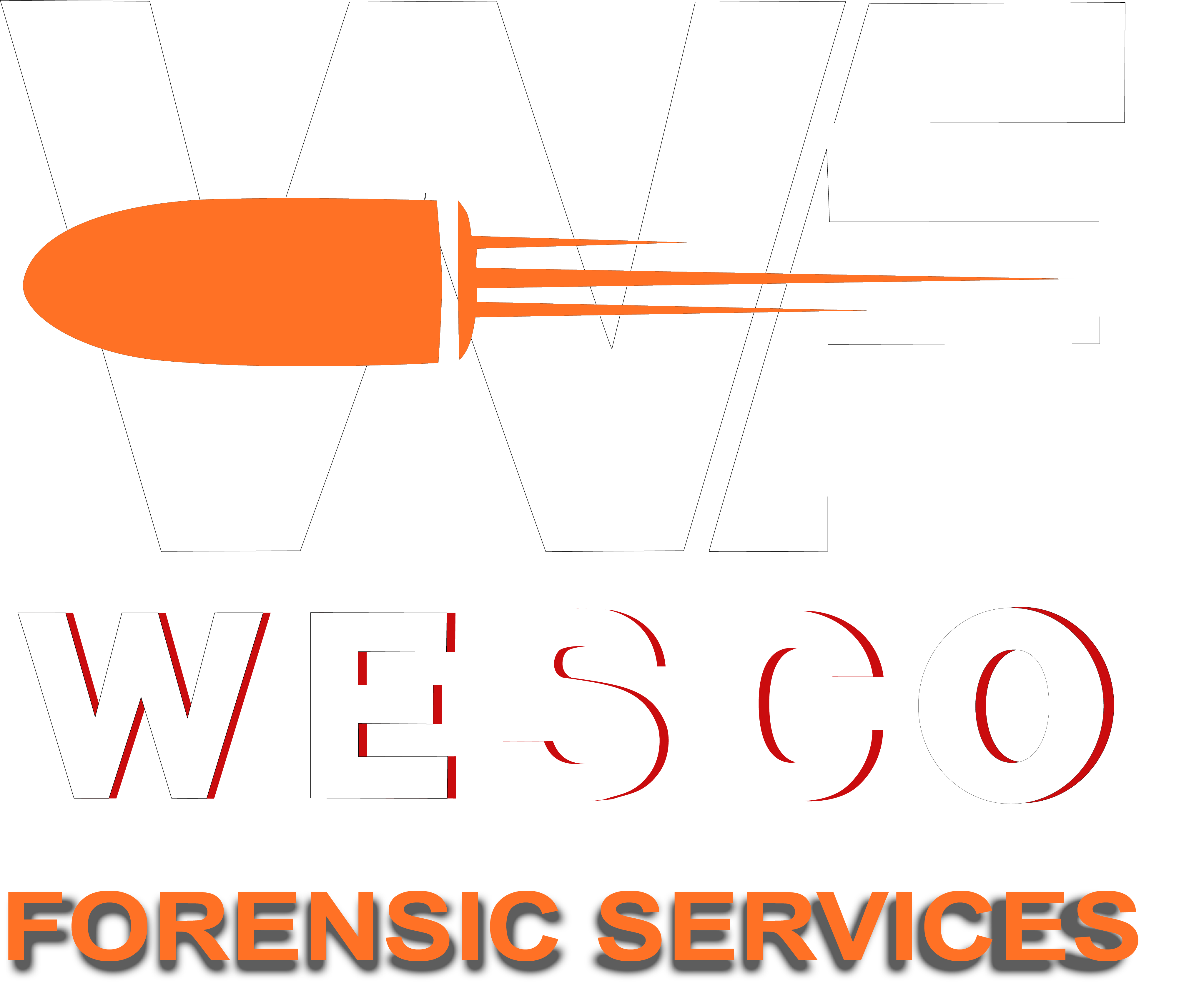BALLISTIC EVIDENCE
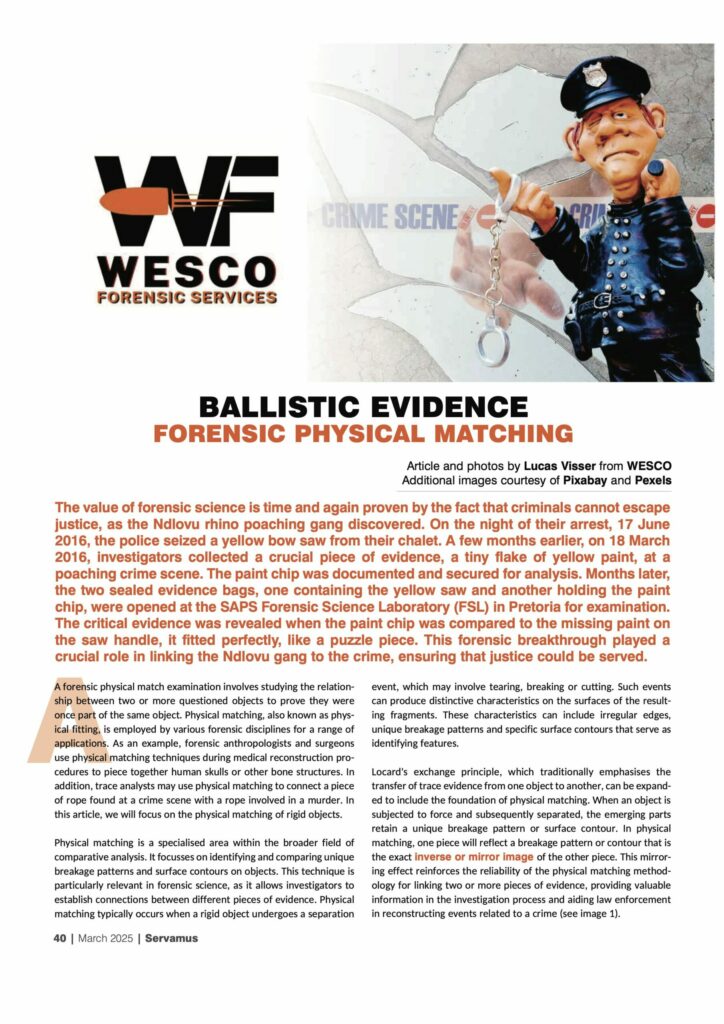
Article and photos by Lucas Visser from WESCO
The value of forensic science is time and again proven by the fact that criminals cannot escape justice, as the Ndlovu rhino poaching gang discovered…
WRITTEN IN BLOOD
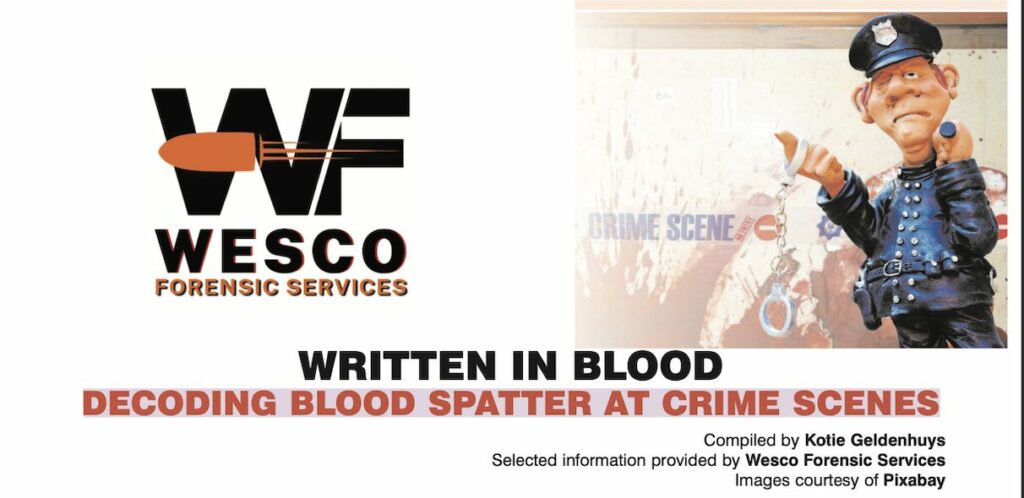
Blood spatter and bloodstains on crime scenes tell a story of violence, force and movement.
Bloodstain pattern analysis can offer crucial insights into how a crime was committed. In the Henri van Breda case, blood spatter expert former Capt Marius Joubert testified that the blood patterns did not align with Henri van Breda’s version of events. Read more in this captivating article!
Wesco News Letter February 2025

In this Edition:
*Shout out from our CEO Jannie Van Der Westhuizen.
*Why should I be interested in forensics?
*What’s New? Revolutionizing Animal Identification with Biometrics and Cell Phone Technology!
From Insect to Evidence – Forensic Entomology

In the 2004 case of Leigh Matthews, the discovery of a small black spider on her body served as silent evidence, contradicting Donovan Moodley’s claim that he had shot her at the location where
her body was found. Specialist scientist Ansie Dippenaar-Schoeman identified it as a funnel-web spider, common in the Highveld grasslands. The small black spider had spun a web on Leigh’s upper
thighs. The scientist concluded that Leigh’s body had likely destroyed the spider’s original web, forcing it to seek safety and spin a new, fragile web on the body – a white webbing only hours old at the time of discovery. No fly eggs were discovered on Leigh’s body which meant that there were no blood, open wounds or bodily openings that attracted flies to lay eggs.
DNA – Our Unique Blueprint
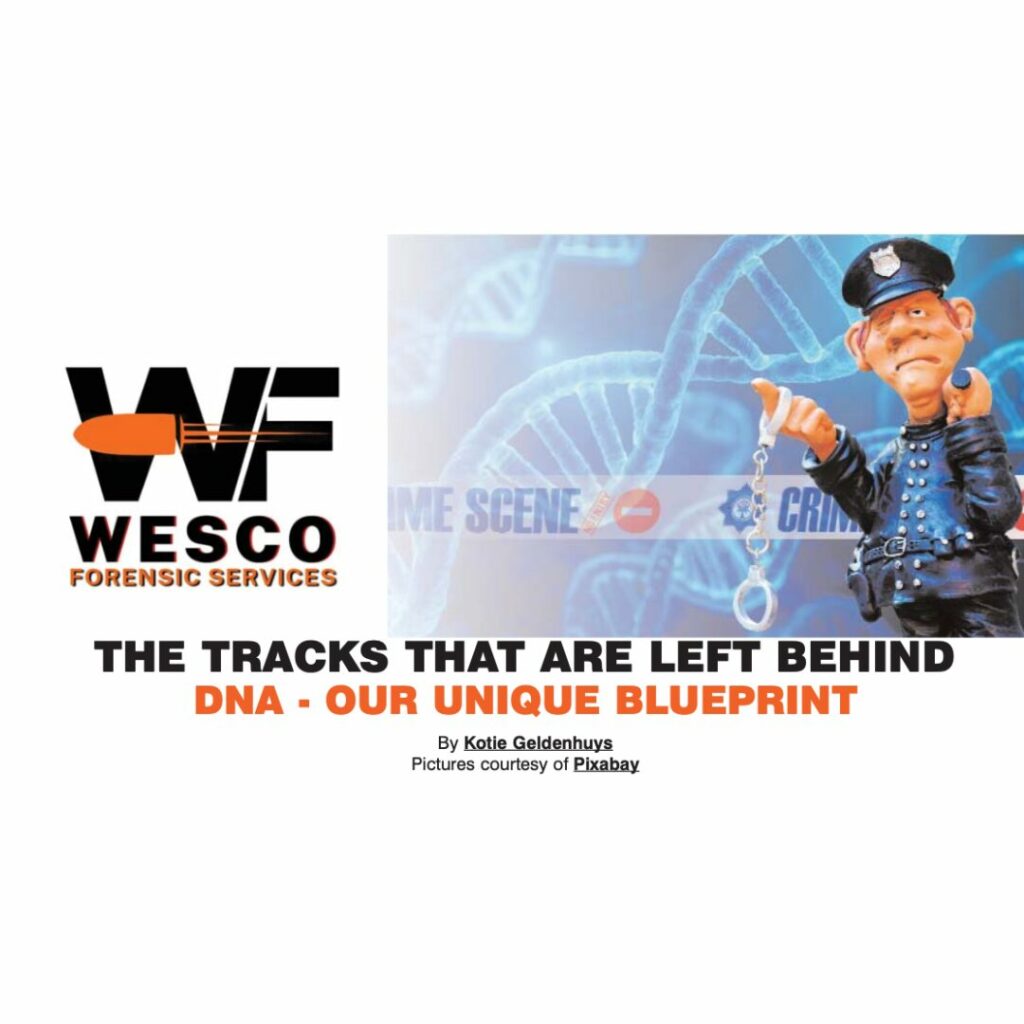
DNA and fingerprints are unique to each individual, much like a signature that cannot be faked. DNA, or deoxyribonucleic acid, is often described as the “blue print of life,” because it contains all the information that an organism requires to function and for
reproduction. Each molecule contains a
genetic code that is specific to one person, except in the case of identical twins.
THE TRACKS THAT ARE LEFT BEHIND
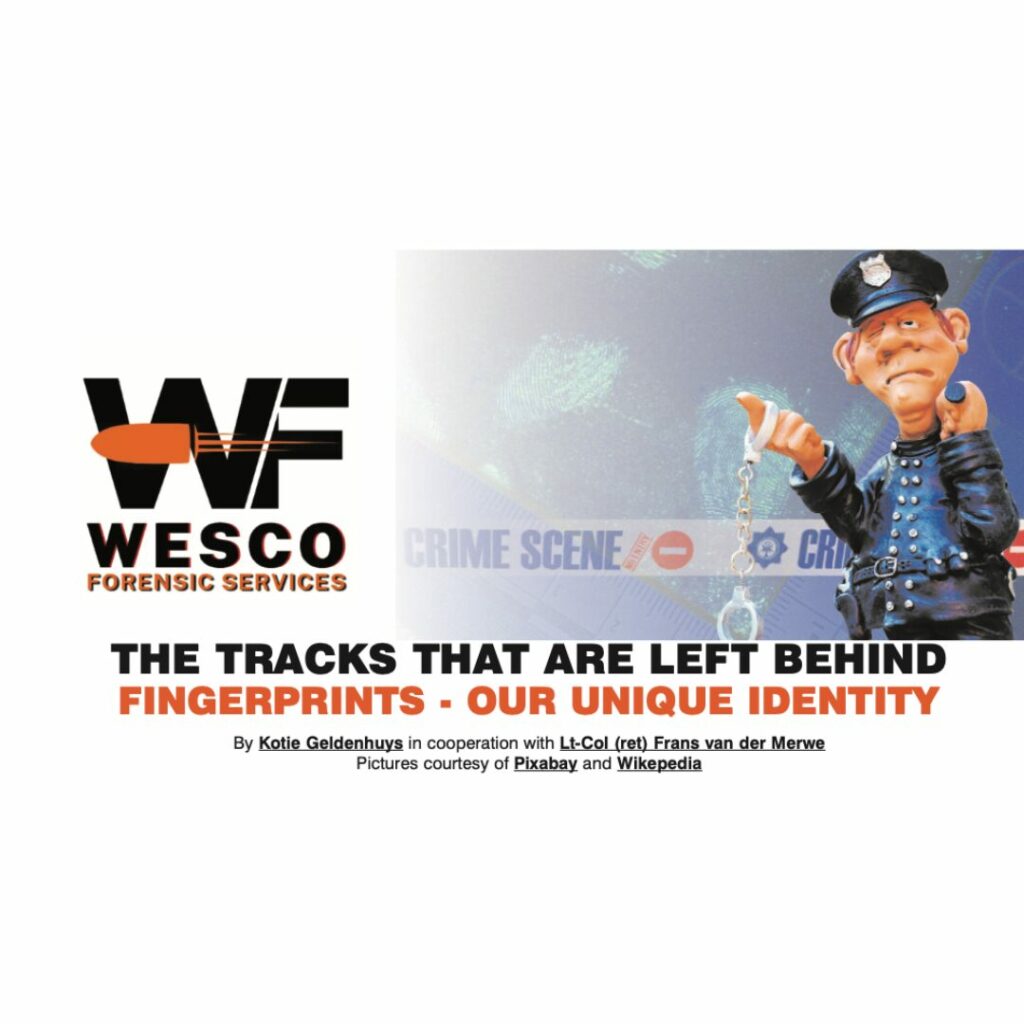
Fingerprints are a highly reliable method of identifying people. They are used in the
process of obtaining identity documents and
passports; providing biometric security
(such as access control to secure areas or systems); identifying unknown deceased persons; and playing a crucial role in criminal investigations by confirming or disproving a person’s identity.
Wesco Servamus September 2024
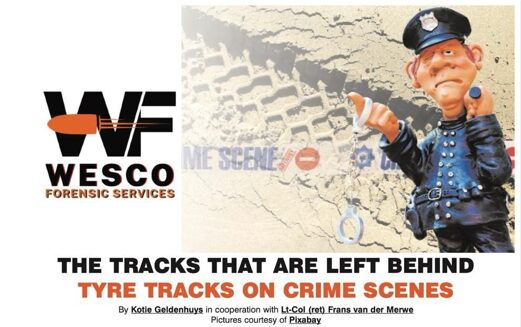
When Moegamat Yusuf Isaacs from Ottery in Cape Town kidnapped and murdered his neighbour’s granddaughter, eight-year-old Sasha-Leigh Crook, who was visiting her grandparents for the holidays in July 2003, he did not realise that tyre tracks would link him to her murder.
Wesco Servamus August 2024
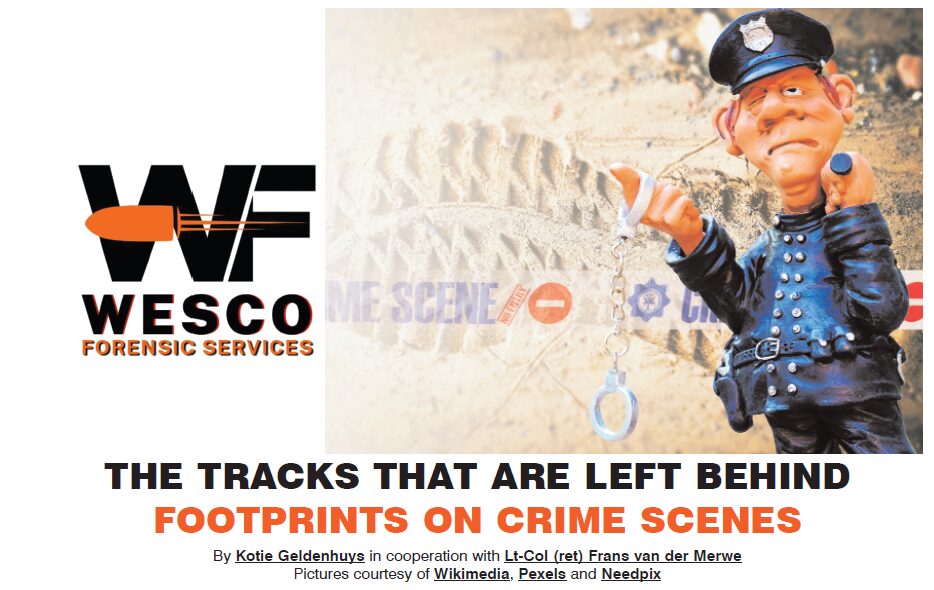
When a perpetrator tries to hide evidence of a crime, it is commonly referred to as “covering their tracks” such as when a burglar wipes his fingerprints with a cloth after breaking into a home. Although he believes that he has erased his traces, he might not realise that his shoe or vehicle’s tyre impressions can still connect him to the crime scene. These impressions are referred to as “pattern evidence” because they create unique patterns. Shoes and boots leave distinct prints and impressions based on their brand, style and size.
Wesco Servamus July 2024
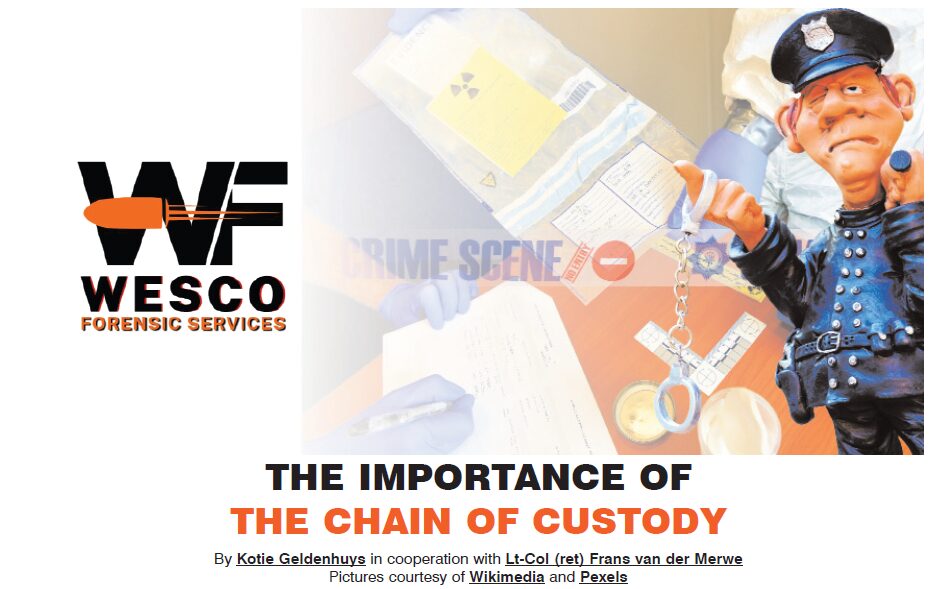
To prove a person’s guilt, a prosecutor needs to demonstrate that the evidence introduced in court is directly linked to the evidence collected at the site/scene of a purported crime. The prosecution must explain that the handling of the evidence was conducted appropriately, without any contamination or tampering. Failure by law enforcement to handle the evidence correctly opens the door for challenges, asserting potential tampering, unreliable test results or the possibility that
evidence was intentionally placed at the
crime scene.
Wesco Servamus June 2024
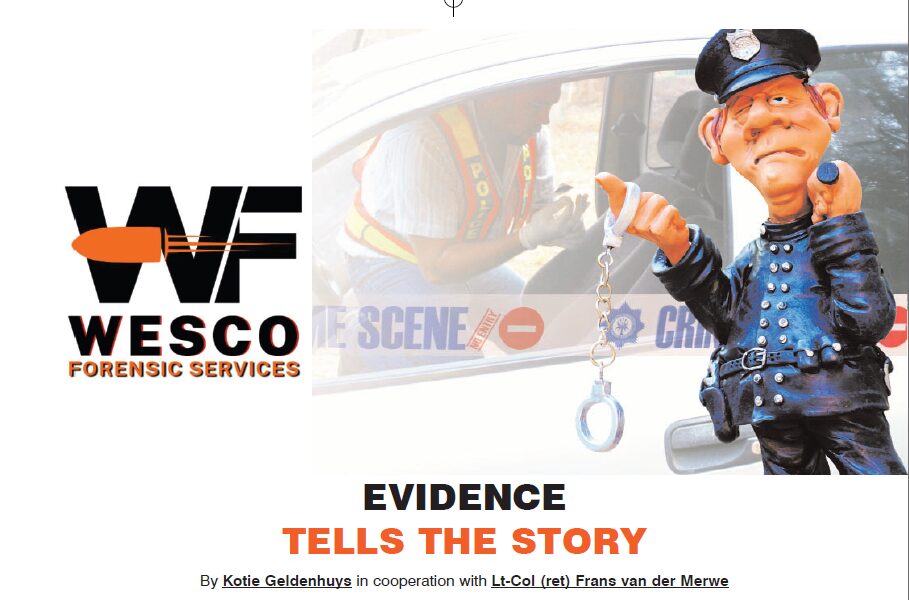
Crime scene examiners use sophisticated
methods to retrieve physical evidence from
crime scenes. This includes using various
forensic light sources operating at different
frequencies and employing diverse chemicals to identify and validate the existence of evidence. UV lights are also used to unveil hidden evidence that is not visible to the naked eye. However, the mere collection of physical evidence is insufficient – to hold significance, the evidence must be legally obtained and undergo proper legal processing.The unequivocal identification of physical evidence at the crime scene forms the foundation of a successful investigation.
